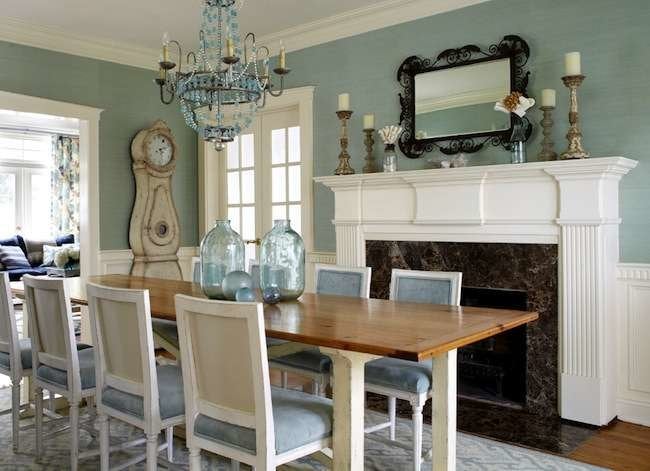We may earn revenue from the products available on this page and participate in affiliate programs. Learn More ›
Gray

Layering different shades of gray produces a fresh twist on a traditional look. When mixing and matching grays, be sure the undertones are consistent, urges Sheri Gibson, a designer with Kristin Petro Interiors, in Elmhurst, Illinois. “The undertones in gray can lean toward brown or green or even pink,” Gibson says. “Make sure your grays work together.”
Orange
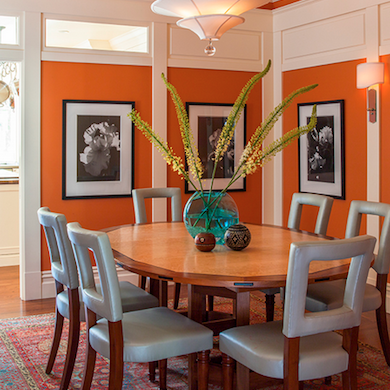
Warm pumpkin walls brighten a dining room where natural light is limited. “My general advice for using orange or any other bright color is to go a few shades more muted than you think you would like,” counsels designer Claudia Juestel, principal of Adeeni Design Group, in San Francisco, California. “Color intensifies when reflected off all four walls of a room.”
White
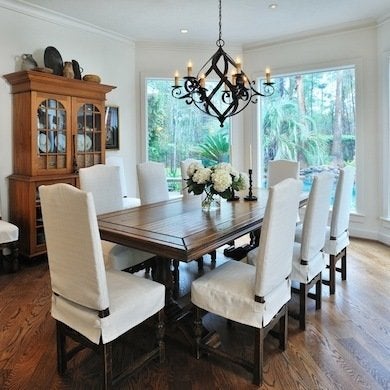
carlaaston.com / Photography by Miro Dvorscak
White walls create a museum-like feeling in homes where collections will take center stage. Designer Carla Aston, principal of Designed with Carla Aston, in The Woodlands, Texas, chose Sherwin-Williams’s Divine White (SW 6105) to highlight her clients’ cherished possessions. Custom covers for seats and chair backs extend the white palette and enhance the room’s serene feeling.
Red

farrow-ball.com
“Strong colors like red work wonderfully in dining rooms, creating a dramatic, intimate atmosphere and the perfect place to entertain,” says Sarah Cole, creative director for Farrow & Ball Paints. “And because these rooms are often lit by candlelight, rich, velvety colors on the walls take on a jewel-like quality.”
Black
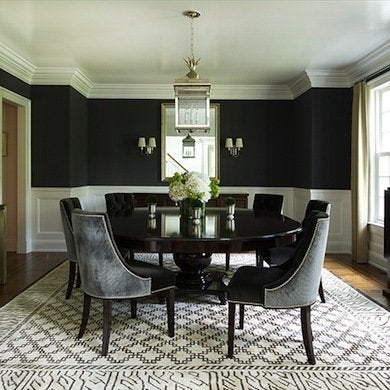
Black walls create an environment that is glamorous, but still warm and inviting. Designer Christina Sullivan Roughan, principal of Roughan Interior Design, in Weston, Connecticut, used silk wall covering from Phillip Jeffries for this elegant room. To prevent the strong color from overpowering the space, she chose Benjamin Moore’s Super White (PM-1) to highlight the room’s architectural details and positioned a light-colored, textural carpet underfoot.
Green
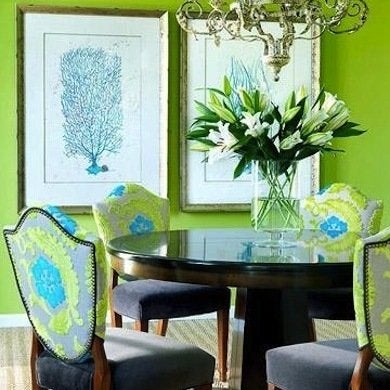
Cheerful apple green sets an energetic mood in a dining room and ensures lively conversations among your guests. To balance the brightness of the walls, inject contrasting elements of dark wood and light artwork, the editors of Midwest Living advise.
Beige
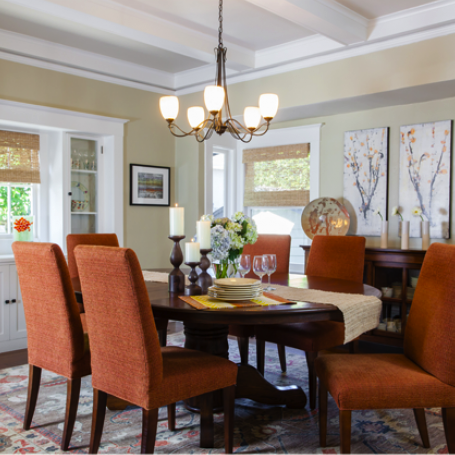
Beige sometimes gets a bad rap, but there’s no denying its appeal as a calming backdrop in a room. “Beige may be considered boring by many,” confirms Anne Norton-Dingwall, principal of AND Interior Design Studio, in Berkeley, California, “but when you use it to highlight a room’s original architecture and add pops of color in chairs, art, and rug, it feels fresh and modern.”
Blue
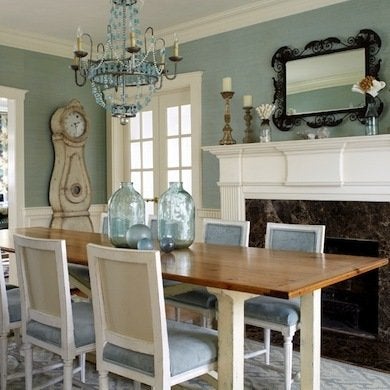
This dining room, with its soft sky-blue hemp wallpaper, was designed by Jules Duffy, principal of Jules Duffy Designs, in Madison, New Jersey. Playful touches like the iron-and-blue-glass chandelier and the centerpiece of blue jars and ornaments add a youthful quality to the room’s traditional look.

Everything You Need for a Lush and Healthy Lawn
Keeping your grass green and your plants thriving doesn’t just take a green thumb—it starts with the right tools and supplies.
